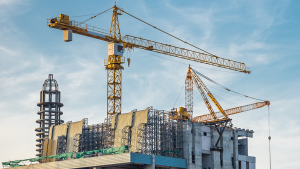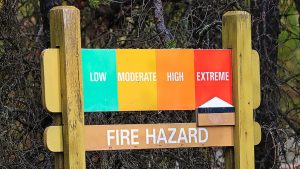The Council of Construction Associations (COCA) asked WorkSafeBC to work with the construction industry to resolve an inconsistency between a WorkSafeBC regulation and the Canadian Standards Association (CSA) Code of Practice.
View from the Board | Grant McMillan
The Council of Construction Associations (COCA) asked WorkSafeBC to work with the construction industry to resolve an inconsistency between a WorkSafeBC regulation and the Canadian Standards Association (CSA) Code of Practice.
The issue has now been successfully resolved.
It was about the requirement for top guardrail heights on system scaffolding.
The CSA Code of Practice recommends a top rail height of 39 inches, plus or minus three inches.
According to the CSA, a top rail could be as low as 36 inches.
However, WorkSafeBC Regulation 4.54 requires a top rail height of 40 to 44 inches.
This affected hundreds of scaffold systems throughout B.C. – not just in construction.
Most scaffold systems are built to the CSA guideline (CSA Code of Practice for access scaffold; Z797-09; 5.12.3 Guardrail components).
This inconsistency impacted many industries that use system scaffolding, including pulp mills, shipyards, oil refineries, chemical plants and others.
The CSA Code of Practice has been widely followed by manufacturers of scaffold systems and is in widespread use in B.C. and elsewhere in Canada.
The adaption of the existing, CSA Code compliant stock of scaffolding to the WorkSafeBC Regulation standard would be costly as well as impractical.
After a request from COCA and a series of discussions, WorkSafeBC wrote a Vice President (VP) Directive and issued a guideline that permits the use of the CSA or ANSI standard for the guardrail top height requirement.
WorkSafeBC is of the view that the CSA and ANSI standards provide acceptable guardrail specifications for pre-manufactured metal scaffold systems.
Employers should have the choice of using these platforms with top rails of guards at heights ranging between 36 and 45 inches, as permitted in the standards.
An amendment to the regulation is being sought to bring consistency between the definition of guardrail under section 4.55 and the specifications in the CSA and ANSI standards for pre-manufactured metal scaffolding.
Until the regulation review is completed, employers and other workplace parties will be permitted to use pre-manufactured metal scaffold systems with guards having top rails ranging in height from 36 to 45 inches above the work surface.
To provide for this, the senior vice president of workers and employer services at WorkSafeBC has issued the directive by authority of section 188(4) of the Workers Compensation Act.
It directs officers to not apply section 4.55, as it pertains to the height of top rails of guards on work platforms covered under section 13.2(1)(a) only. Officers will be inspecting to ensure that work platform guard top rails on pre-manufactured scaffolding meet either the CSA or ANSI standards, namely that they are between 36 and 45 inches above the work surface.
This will avoid the potential for hundreds of scaffold systems being declared in violation of the WorkSafeBC regulation.
In addition, as noted in the guideline, this issue has been forwarded to WorkSafeBC Regulation Review and added to their work plan.
Grant McMillan is the president of the Council of Construction Associations (COCA), which represents the interests of 16 construction associations in B.C. on WorkSafeBC matters. Grant is also a member of the Journal of Commerce Editorial Advisory Board.











Recent Comments
comments for this post are closed